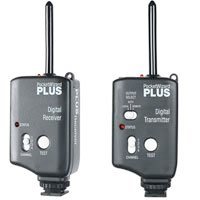UPDATE: Since this post was written, we have also featured a Ring Flash Week, with everything from a resources page to a tutorial on how to make a high-output, DIY ring flash adapter that can overpower sunlight. Ring Flash Week begins here.
__________________________
 If you are like me, you want to experiment with specialized lighting techniques. But those "looks" sometimes remain specialized because of the cost associated with the gear.
If you are like me, you want to experiment with specialized lighting techniques. But those "looks" sometimes remain specialized because of the cost associated with the gear.
Ring flash is a good example. The 3-d, shadow-wrapped look is unmistakable. And darn near impossible to duplicate without liberating a few hundred bucks from your wallet for a ring flash.
I'll be danged if Strobist reader Jedrek hasn't circumvented the photo gearmafia industry completely with some plastic bowls, scissors, foil and glue.
So, for just a hour's work (and some mysteriously missing spousal tupperware) you can be getting those edgy photos that look like they came right out of a fashion mag.
 There's not much to it, technique-wise. Just stick someone up against a colored wall and nuke away.
There's not much to it, technique-wise. Just stick someone up against a colored wall and nuke away.
The kissy lips are not included in the kit. (And your subject probably will not have a set like these.)
Fire a test shot, adjust your exposure - use the flash on manual for repeatable results - and you are good to go, my friend.
Or, you can always go TTL if you are a noob. (Better yet, click here and learn how to light light a real photographer... )
 Click here for a more readable version of these instructions, and you'll be on your way to building one for yourself.
Click here for a more readable version of these instructions, and you'll be on your way to building one for yourself.
There is also a full discussion on the project on the Strobist Flickr group. (You are a member, right? It's free, you know.)
So make it a weekend project and stick your stuff up in the thread.
Here's a quick lighting hint: While this light looks great with someone plastered up against a wall, you can really amp it up with some added rim light to create three-dimensional lighting tension.
Or an easier tweak: Position the bowl where the strobe is entering from the top. The light is hotter at the entry point, so the vertical portion of the shadow would be more pleasing.
You could also work it against a sunset. Heck, go nuts with it. We are only talking some bowls, foil and glue here, people.
Thanks much to Jedrek for the tutorial!

__________________________
Ring flash is a good example. The 3-d, shadow-wrapped look is unmistakable. And darn near impossible to duplicate without liberating a few hundred bucks from your wallet for a ring flash.
I'll be danged if Strobist reader Jedrek hasn't circumvented the photo gear
So, for just a hour's work (and some mysteriously missing spousal tupperware) you can be getting those edgy photos that look like they came right out of a fashion mag.
The kissy lips are not included in the kit. (And your subject probably will not have a set like these.)
Fire a test shot, adjust your exposure - use the flash on manual for repeatable results - and you are good to go, my friend.
Or, you can always go TTL if you are a noob. (Better yet, click here and learn how to light light a real photographer... )
There is also a full discussion on the project on the Strobist Flickr group. (You are a member, right? It's free, you know.)
So make it a weekend project and stick your stuff up in the thread.
Here's a quick lighting hint: While this light looks great with someone plastered up against a wall, you can really amp it up with some added rim light to create three-dimensional lighting tension.
Or an easier tweak: Position the bowl where the strobe is entering from the top. The light is hotter at the entry point, so the vertical portion of the shadow would be more pleasing.
You could also work it against a sunset. Heck, go nuts with it. We are only talking some bowls, foil and glue here, people.
Thanks much to Jedrek for the tutorial!

























